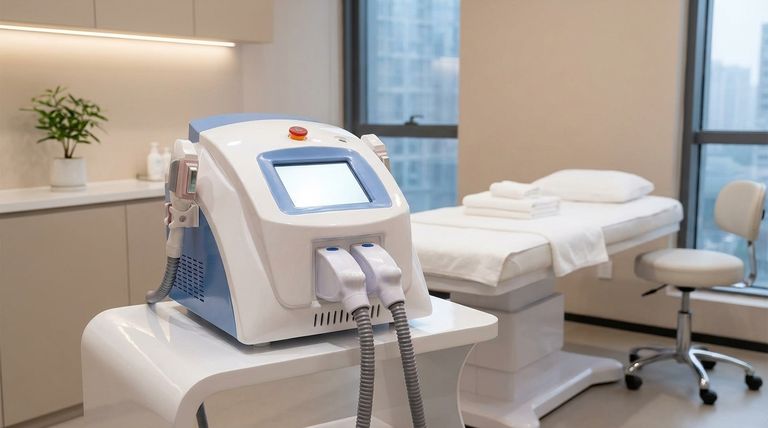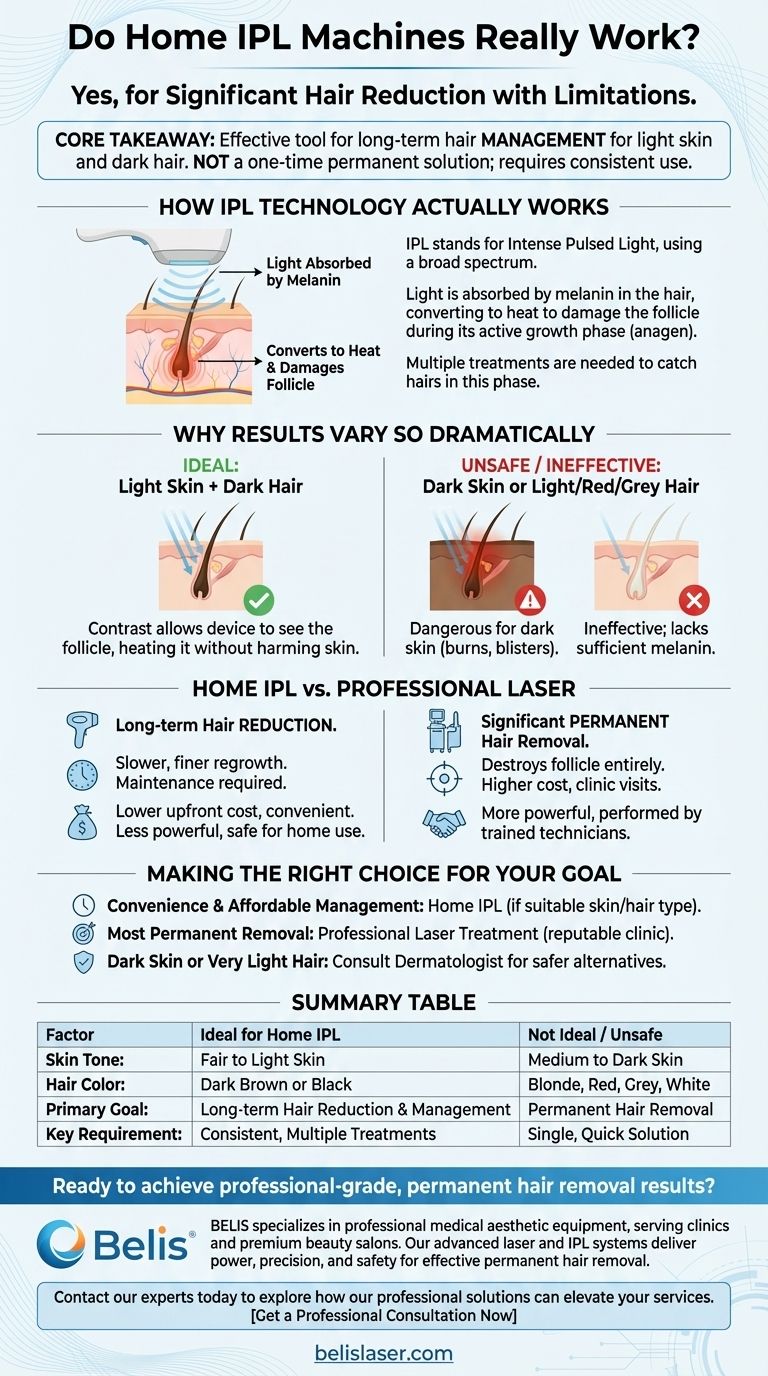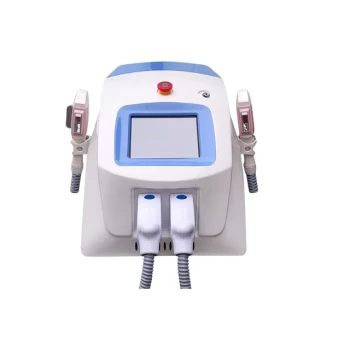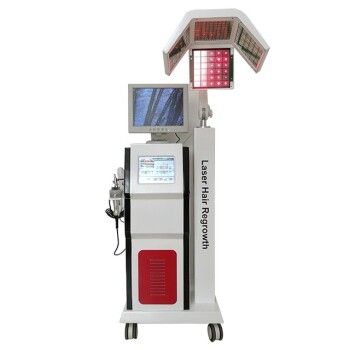Yes, home IPL devices can work for significant hair reduction, but their effectiveness is not universal. These devices are highly dependent on the contrast between your skin tone and hair color, and they are designed to reduce and slow hair growth over time, not to provide the permanent removal associated with professional-grade lasers.
The core takeaway is this: A home IPL device is an effective tool for long-term hair management for the right candidate—someone with light skin and dark hair. It is not a one-time, permanent solution and requires consistent use to maintain results.

How IPL Technology Actually Works
To understand if an IPL device will work for you, it's crucial to understand the mechanism behind it. The results, or lack thereof, are not random; they are a direct consequence of the technology's design.
The Principle of Light and Heat
IPL stands for Intense Pulsed Light. Unlike a laser, which uses a single, focused wavelength of light, IPL uses a broad spectrum of light.
This light is designed to be absorbed by melanin, the pigment that gives hair its color. When the melanin in the hair follicle absorbs the light energy, it converts into heat. This heat damages key areas of the follicle, putting it into a resting phase.
The Importance of the Hair Growth Cycle
Hair grows in cycles, and IPL is only effective when the hair is in its active growth phase (the anagen phase). During this phase, the hair is still connected to the follicle.
Because only a fraction of your hairs are in this phase at any given time, multiple, consistent treatments are required. This ensures you eventually treat every follicle as it enters the correct growth stage.
Why Results Vary So Dramatically
The effectiveness of a home IPL device hinges almost entirely on one factor: the contrast between your skin and your hair.
The Critical Role of Contrast
The device needs to "see" the hair follicle clearly against the surrounding skin. The ideal scenario is light skin with dark hair.
In this case, the dark melanin in the hair follicle readily absorbs the light energy, while the lighter skin reflects it. This allows the follicle to be heated and damaged without harming the skin.
Who Should Not Use Home IPL
IPL is ineffective on very light blonde, red, or grey hair. These hair colors lack sufficient melanin to absorb the light and generate the necessary heat.
More importantly, home IPL is dangerous for dark skin tones. The device's light cannot distinguish between the melanin in the hair and the melanin in the skin. This can cause the skin to absorb too much energy, leading to burns, blisters, and potential hyperpigmentation or scarring.
Understanding the Trade-offs: Home IPL vs. Professional Laser
While often compared, home IPL devices and professional laser treatments serve different purposes and operate at vastly different levels.
Effectiveness and Permanence
Home IPL devices offer long-term hair reduction. With consistent use, hair grows back much slower, finer, and sparser. Maintenance sessions are required to keep the follicles dormant.
Professional lasers use a more concentrated, powerful wavelength of light that is capable of destroying the follicle entirely. This leads to more significant and permanent hair removal.
Cost and Convenience
The primary advantage of home IPL is the one-time upfront cost, which is significantly lower than a full course of professional treatments. It also offers the privacy and convenience of at-home use on your own schedule.
Power and Safety
For safety reasons, home IPL devices are built to be far less powerful than professional machines. This lower energy output is a key reason they provide reduction rather than permanent removal and require more frequent sessions. Professional treatments are performed by trained technicians who can safely operate higher-energy equipment for more decisive results.
Making the Right Choice for Your Goal
Ultimately, deciding if a home IPL device is "worth it" depends on your specific goal and physical characteristics.
- If your primary focus is convenience and affordable long-term hair management: A home IPL device is an excellent choice, provided you have the suitable skin and hair type for it to work effectively.
- If your primary focus is achieving the most permanent hair removal possible: Investing in professional laser treatments from a reputable clinic is the more effective and reliable path.
- If you have dark skin or very light hair: Home IPL is not a suitable or safe option, and you should consult a professional dermatologist for safer alternatives.
Understanding these core principles allows you to look beyond the marketing and choose the right tool for your specific goals.
Summary Table:
| Factor | Ideal for Home IPL | Not Ideal / Unsafe |
|---|---|---|
| Skin Tone | Fair to Light Skin | Medium to Dark Skin |
| Hair Color | Dark Brown or Black | Blonde, Red, Grey, White |
| Primary Goal | Long-term Hair Reduction & Management | Permanent Hair Removal |
| Key Requirement | Consistent, Multiple Treatments | Single, Quick Solution |
Ready to achieve professional-grade, permanent hair removal results?
Home IPL is a great tool for management, but for truly transformative and lasting outcomes, professional equipment is key.
BELIS specializes in professional medical aesthetic equipment, serving clinics and premium beauty salons. Our advanced laser and IPL systems deliver the power, precision, and safety required for effective permanent hair removal, treating a wider range of skin types safely.
Contact our experts today to explore how our professional solutions can elevate your services and deliver superior client results.
Get a Professional Consultation Now
Visual Guide

Related Products
- IPL SHR Hair Removal Machine for Permanent Hair Removal
- Clinic Use IPL and SHR Hair Removal Machine with Nd Yag Laser Tattoo Removal
- Clinic Diode Laser Hair Removal Machine with SHR and Trilaser Technology
- Diode Laser SHR Trilaser Hair Removal Machine for Clinic Use
- Diode Tri Laser Hair Removal Machine for Clinic Use
People Also Ask
- Can IPL be used on all skin types? Understanding Risks for Darker Skin Tones
- What are the negative effects of IPL? Understanding Risks for Safe Treatment
- Does IPL hair removal really work? Unlock Long-Term Hair Reduction with Science
- Does IPL work on all skin types? The critical role of the Fitzpatrick scale in safety and results
- Does IPL hair removal actually work? Achieve Long-Term Hair Reduction



















